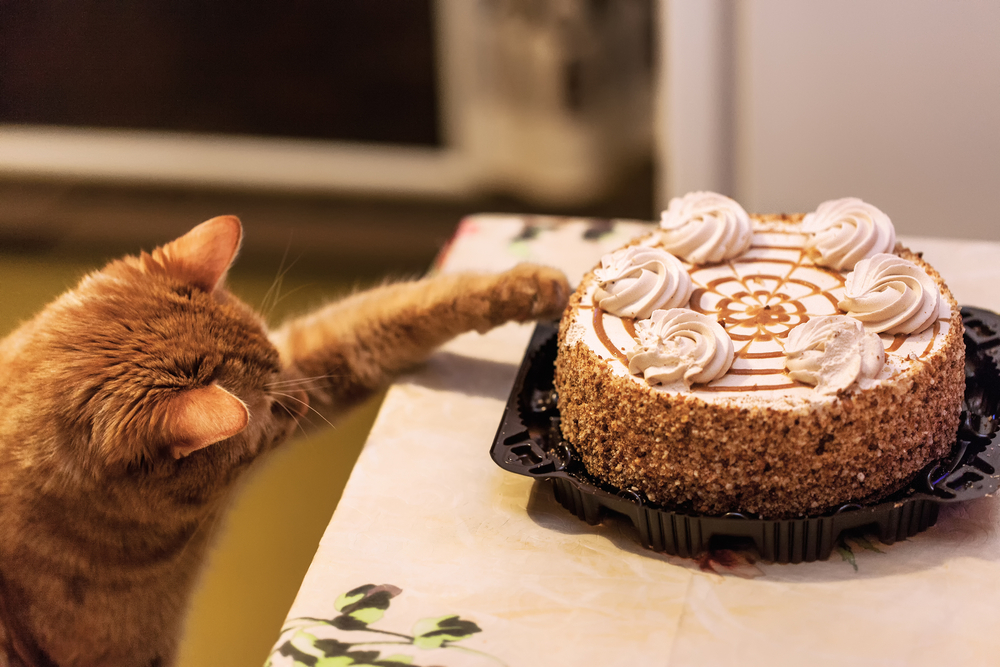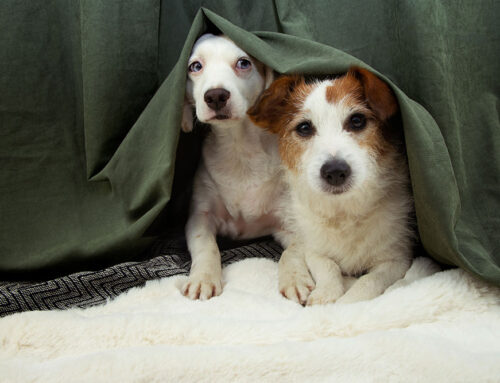Pets get themselves into all types of mischief and, since they investigate their surroundings with their nose and mouth, toxicity is common. As a pet owner, you must protect your curious companion from hazards, and you may be surprised to learn how many potential toxins are lurking around your home. Each year, the ASPCA Animal Poison Control Center (APCC) releases a list of the 10 most common pet toxins, according to calls they receive. In 2019, the APCC fielded more than 232,000 calls about pets who had been exposed to potential poisons, and these are the 10 most frequently reported toxins. How many are in your home?
#1: Over-the-counter medications
Many people assume that a medication sold without a prescription is safe for people, and pets, but, unfortunately, many over-the-counter medications are extremely toxic to pets. Anti-inflammatories, such as ibuprofen (i.e., Advil), acetaminophen (i.e., Tylenol), and naproxen (i.e., Aleve), which are regularly stocked for common human ailments, can cause significant organ damage, and death, if given to a pet instead of a veterinary-approved medication. These medications are also commonly stored in purses and backpacks, where pets can help themselves to a bottle of crunchies.
#2: Human prescription medications
You may realize that you shouldn’t share your medication with your furry friend, but your pet may sneak pills from your nightstand, bathroom counter, or purse, if you aren’t careful. Common human prescriptions, including cardiac, anti-anxiety, thyroid, and ADHD medications, are the most frequently reported, and can severely affect your pet. Keep all medications stored safely away from your curious pet.
#3: Toxic foods
Many foods perfectly safe for human consumption can cause significant pet toxicity, so refrain from tossing bits to your four-legged pal as you cook, or sharing your leftovers, without first checking to ensure the food is nontoxic. Some of the most common offenders include:
- Garlic
- Onions
- Xylitol, a sugar substitute found in sugar-free gum, peanut butter, and sweets
- Macadamia nuts
- Grapes and raisins
- Alcohol
- Raw yeast dough
If you are unsure whether a food is safe for your pet, check out ASPCA APCC or the Pet Poison Helpline’s websites, before offering it to your pet.
#4: Chocolate
Although chocolate is obviously a food, it accounts for more than 10% of calls the APCC receives, earning its own spot on the list. Dogs are more likely to sneak this tempting treat, and the darker the chocolate, the more concentrated its toxic ingredients. Less than one ounce of baking chocolate per 10 pounds of pet can be lethal, and ingestion of lesser amounts can cause vomiting, diarrhea, hyperactivity, seizures, hyperthermia, and cardiac arrhythmias.
#5: Veterinary products
Many veterinary medications are flavored to resemble treats, for easier administration. Unfortunately, your pet may like her medication so much that she seeks out the bottle and devours its entire contents. Keep all medications, including those prescribed for your pet, well out of paws’ reach. Flea and tick medications can also cause toxicity, especially if you accidentally apply a canine product to your cat, as cats are highly sensitive to many dog-safe ingredients.
#6: Household products
If you are planning a home improvement project, keep in mind that many supplies, such as spackle, paint, and adhesives, can be toxic to pets. A tub of spackle or a paint puddle may sound unappetizing to you, but your pet may find these items’ different texture oddly appealing. Keep your pet busy in another room with a peanut butter-filled Kong toy, or place her in her crate, to keep her safely out of your construction zone.
#7: Rodenticides
Rodent baits are designed to appeal to mice, rats, moles, and gophers, but may inadvertently also attract your pet. Common rodenticides contain various toxic ingredients, including:
- Anticoagulants — These prevent blood from clotting, and lead to internal bleeding.
- Cholecalciferol — High calcium levels that lead to kidney failure can result after ingestion.
- Bromethalin —This causes brain swelling and serious neurologic effects, if ingested.
- Phosphides — Phosphides release deadly phosphine gas, which is also toxic to people.
As a pet owner, you should never place rodent bait around your home, or store it in your garage or shed.
#8: Plants
Although dogs are more likely to eat most toxic substances, cats often can’t resist chewing on plant leaves and flowers. If your pet ingests a toxic plant, such as a lily or autumn crocus, deadly toxicity can result. Lilies top the list of dangerous plants, as ingestion of a small amount of leaves, flowers, or pollen can quickly lead to kidney failure. Before planting your flower gardens this spring, consult the ASPCA’s toxic and non-toxic plant list.
#9: Insecticides
Store bug spray, roach hotels, and ant bait out of paws’ reach, and never place poisons designed to attract bugs where your pet can get to them. Snail and slug baits containing metaldehyde are particularly toxic, and can be deadly if your dog finds a bag in the garage, or gobbles up bait you applied around your prize roses. Keep in mind that yard treatments designed to kill grubs, fleas, and ticks can also be toxic, so ensure you follow package directions, or the advice of your lawn care company, before allowing your pet to lounge on the grass.
#10: Garden products

Fertilizers, particularly those containing organic compounds, such as bone or blood meal, can be tempting to pets. Although these products pose little toxicity threat, they can clump in your pet’s stomach or intestines, and cause an obstruction. Herbicides you spray or dust over your plants can also be dangerous, so store these products carefully, and build a fence around your garden, if you choose to use potentially toxic products.
With every area of your home, and yard, containing potential toxins, you must remain vigilant to keep your pet safe. Store toxic products safely, or eliminate them from your home, to reduce your pet’s risk. If, despite your best efforts, your pet ingests a toxic substance, call us immediately.






Leave A Comment